It would be clichéd to begin this article by saying sci-fi visions of the past have now become real. Everybody knows that, and the world of sci-fi has also started dreaming up something else for tomorrow. It would be more useful if we began by showing you around a smarthome filled with connected devices and the associated benefits, problems and loopholes.
A modern home may be guarded by just a smart door lock or a more complex security system. At the simplest, a smartlock equipped with Bluetooth Low Energy (BLE) or some other wireless communication technology will be able to recognise the presence of a phone with an authorised digital key in its vicinity and unlock the door. More complex systems use biometrics like fingerprints, heartbeat patterns, facial features or iris matching to recognise the owner.

Locks that are also equipped with cameras and Wi-Fi connect to your home’s Internet connection and enable you to see who is ringing the doorbell, even when you are away. If it is an acquaintance you want to admit into the house, you can unlock the door remotely. Bluetooth-only door locks are believed to be safer because Wi-Fi ones are always connected to the Internet, opening up greater possibilities of hacking. Therefore popular smartlocks have a Bluetooth-enabled base lock, which can be enhanced with a Wi-Fi add-on.
Other areas of the house too can be guarded with wireless sensors and cameras working in conjunction with a mobile app. There are readymade, customised and do-it-yourself (DIY) kits for guarding and remotely managing the front door as well as other areas of the house.
Living spaces: connected, cosy and comfy
Modern heating, ventilation and air-conditioning systems (HVACs) are also connected and made smart with unified dashboard view and adaptive customisation. While some advanced air-conditioners have inbuilt smart features, others can be clubbed with smart thermostats and sensors to create a holistic HVAC system.
Sensors are used to automatically detect when people enter a region, the number of people present, their positions and even their perspiration levels in each region of the house. This information, along with temperature and humidity readings, helps to dynamically change appliance settings like temperature and blow, to ensure best comfort and affordable energy bills, too. Most of these systems can be controlled remotely through a mobile phone, so you can alert it when you start from office, and your home will be cosy and comfy when you reach.
Another notable trend here is the use of wearable devices to authenticate users to home automation systems. Consider this. There are multiple occupants of a house, each with different preferences about lighting, room temperature, etc. When a person enters the house or a room, a wearable device like Nymi could be used to immediately recognise and authenticate the user (using heartbeat patterns and other biometric modalities) to home automation systems, which can instantly revert to his or her preset preferences.
Lighting systems at home can also be made to reflect your mood. With modern light-emitting diode (LED) based lighting systems it is possible to make lights change their hue and brightness. Advanced lighting systems take into consideration aspects like position and movement of people, environmental conditions, activity being performed and time of the day to dynamically change the settings, while simpler ones let you program certain preset modes and choose one.
An Indian innovator, Rousing Designs, recently revealed EMO, a personalised lighting system that can be controlled through a mobile app to light up your space according to your mood. Read more about it in June issue, pages 38-40.
Your lights can even play music now. Sony recently launched an LED light bulb Bluetooth speaker that combines a 360-lumen bulb and a 2-watt, 40mm speaker that can be screwed into any standard light socket. The bulb can be controlled with a dedicated near-field communication (NFC) remote or a mobile app. To fill your home with music, you just need to fit some of these bulbs here and there.
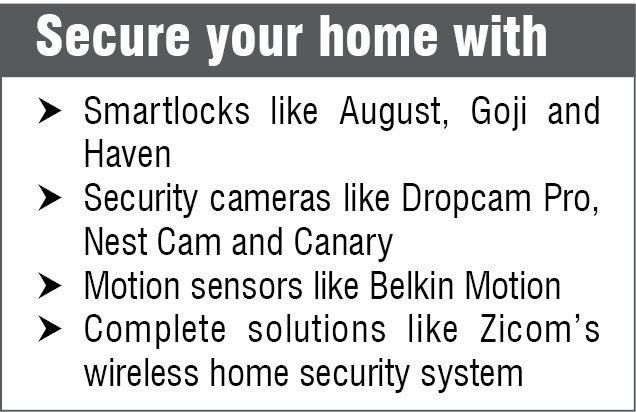
Which OS does your TV run on
Think living room, and the television is the first thing that comes to mind. Indeed, television makers have been offering Internet connectivity for quite some time now, giving access to photos, videos and a lot of online content. However, the focus of connectivity is now shifting from simple streaming of online content to providing a personalised experience. Like in the case of mobile phones, buyers are now beginning to ask the question, “Which operating system (OS)?” when they buy a television (TV).
Sony, Sharp and Philips are among those who have opted for Google’s Android TV platform. Going for a common platform like this instead of a proprietary one ensures that your content and customisations stay with you even if you change your TV. Plus, if you use a TV with Android TV OS, you can also control it using your Android phone or tablet.
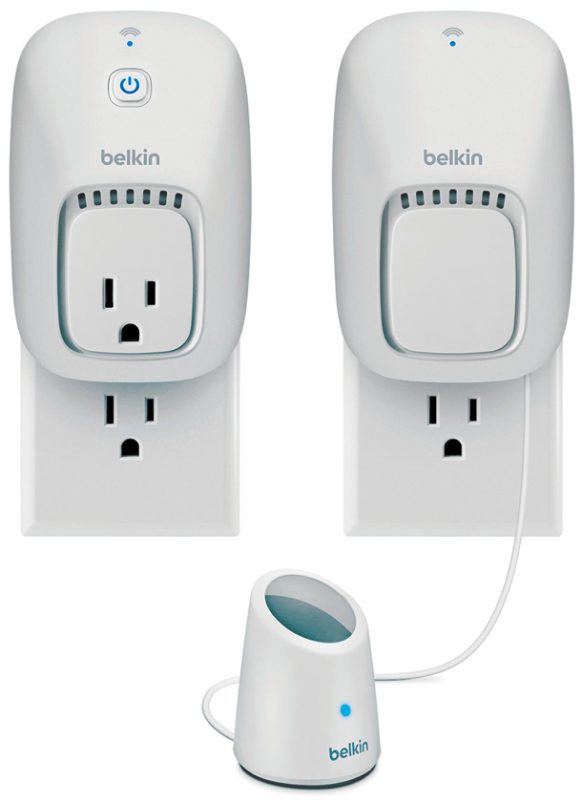
Panasonic uses Firefox OS, and it is evident that Firefox has built a TV-centric experience rather than simply extend its mobile OS for use on a bigger screen. Samsung uses Tizen OS, the company’s new OS that is being rolled out on most of its devices, while LG sticks to its WebOS.
Taking on the giants is Roku TV, a new smart TV platform that is being used in several economical TV models from Hisense, Haier and Sharp. With a robust search and other essential features, Roku seems to have got the basics right.
Tech to rest and dress well
When it is time to catch up on some sleep, there are products like ReST Bed that ensure even a short nap is a powerful recharge. ReST uses a special pressure-sensing fabric that monitors your pressure points and makes automatic real-time adjustments to ensure that your frame is properly supported. The dashboard provides sleep data, which helps judge your health condition and readiness for upcoming activities.
Cameras set up inside wardrobes can help you select clothes to wear on a particular day, having a quick glance at what is in the laundry and what is ready to wear. But, that is just too simple. How about a smartwardrobe that can automatically steam-clean and dry your clothes, remove wrinkles and deodorise, too?
Well, that is just what LG unveiled last year. The company believes that LG Style can save a lot of time for busy people and can also be useful in office lockers and airport lounges.
Cooking and cleaning the smart way
Smart and connected refrigerators, coffee makers, slow cookers and dishwashers are old tales. From kitchen-tops to refrigerators, every part of your kitchen is getting connected and smart, with appliances and platforms from players like LG and Samsung.
You can view the contents of your fridge on your mobile phone and prepare your shopping list before leaving office. Your fridge door can show the use-by date of each item inside it. There are Wi-Fi-enabled egg holders that tell you how many eggs you have or by when these are to be used.
You can upload notes through a mobile app, to be displayed on the kitchen door for your kids or spouse to see when they return home. Your kitchen-top could become a giant tablet, on which you can view recipes and how-to videos. The milk pan can sense when the milk is about to boil over and automatically turn off the stove.
Now, if all this convenience has made you cook and eat more than ever before, then you should start using smart dining ware like SmartPlate and HAPIfork, which work with mobile apps to control your diet.
Not interested in new appliances
You do not have to necessarily go about buying new connected appliances if you want to smarten your house. There are innumerable DIY kits available today that enable you to automate your home in any way possible. As easy as fitting Lego blocks, that is how German startup digitalSTROM wants home automation to be. These little colourful blocks can be fitted into your existing electrical infrastructure to add an element of intelligence to everything from your lights to your kitchen-tops.
There are loads of smartswitches and smartplugs available today, from international and Indian manufacturers. These enable you to switch on or off practically any electric-powered device from anywhere, using your smartphone. This makes a lot of sense for somebody who is just toying with the idea of home automation.
One app to rule them all
Though it is nice to have a home full of smartdevices, it can be a headache managing these if each one had a separate app and each used a different protocol. “There is no doubt that there is growing popularity of smartdevices, be it wearables, tablets, smartphones, extending to smarthomes and even smartcities. However, these systems are under constant pressure to deliver the correct functionality at the right time, and at the right speed. The challenges these face are power and cost. Though flexibility and adaptability are guaranteed once we shift to these systems, there are issues involved in handing multiple connected devices. It is important that all these devices are connected over a converged Internet Protocol (IP) network. This will help pave the way for interactive, seamless and personalised services,” says Sanjay Gupta, India country manager, NXP Semiconductors. NXP works with ecosystem partners to enable seamless, secure interconnectivity across smartdevices, agnostic to the wireless connectivity protocols used.
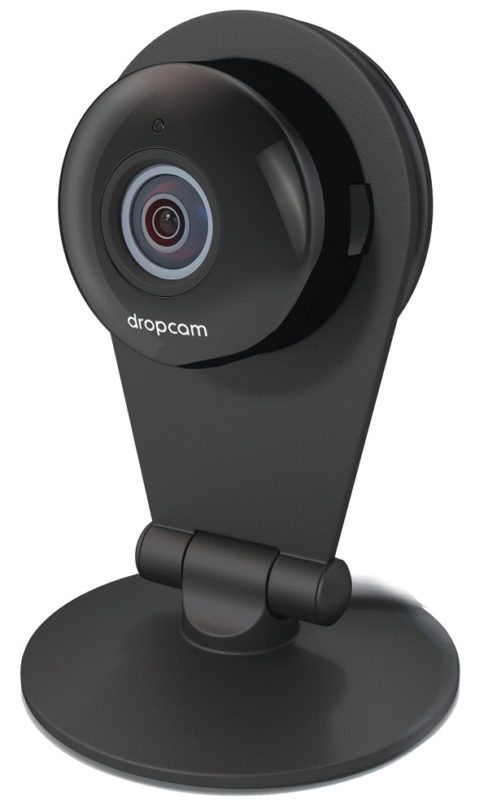
There are a number of easy-to-use, plug-and-play hubs and apps that help you manage several devices using one dashboard. In most cases, the hubs are also capable of handling more than one communications protocol, extending the choice of devices that can be connected and managed through these. From Apple HomeKit to Wink, Samsung SmartThings, Staples Connect and Revolv, there are lots of choices in this space. In order to simplify home management, it is better you choose devices that are compatible with a single platform so you can unify these easily.
Google Weave. This is a cross-platform protocol and infrastructure, which aims to unify products from several manufacturers onto a single platform, to make it easy to set up and manage multiple devices from smartphones and the Web.
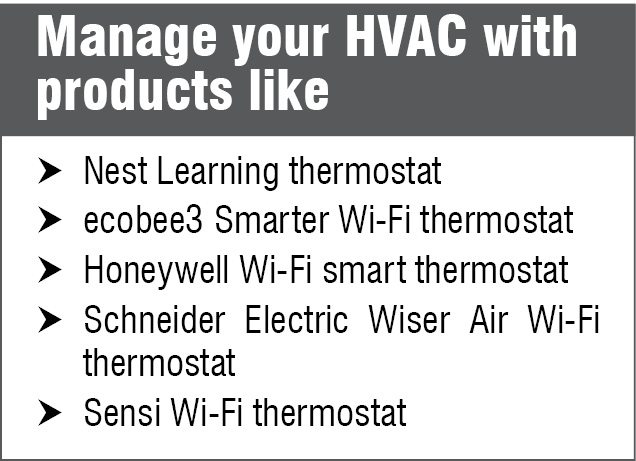 Weave aims to provide standardised schemas that can define device interoperability regardless of brand or manufacturer. This not only makes it easy for users but also for developers, who can develop apps for the physical, connected world, just like they would for Android or iOS devices.
Weave aims to provide standardised schemas that can define device interoperability regardless of brand or manufacturer. This not only makes it easy for users but also for developers, who can develop apps for the physical, connected world, just like they would for Android or iOS devices.
Nest Weave. This is not the same as Google’s Weave although Google owns Nest. Nest’s Weave is a communications protocol based on Thread, which Nest has been using for several years now. In a smart move, Nest has now opened up this secure, reliable, low-power, low-latency (100ms), peer-to-peer connection standard for other smart home device manufacturers to use.
In a Weave network, devices talk to one another directly without going through a mobile app or a router. This means that the network is up even when Wi-Fi connection is down. This makes it ideal for always-on devices like smartlocks.
Products that adopt Nest protocol are certified as ‘Works with Nest.’ Once such a product is added to a home that already has another Nest product, there is practically no set up involved. The device immediately syncs with other devices and gets recognised by the apps also, making it easy to manage multiple devices.
Apple HomeKit. HomeKit is a home automation platform that lets you control all compatible home appliances securely and conveniently using an iOS device. The idea is to be able to install several disparate devices in your house, forget all about their individual apps and manage these using HomeKit.
You can pre-program single commands or moods that achieve several tasks at one go. For example, when you tell the app that you are going to bed, it automatically dims the lights, adjusts the temperature of your bedroom’s air-conditioner, turns on the bedside reading lights and so on. With Siri, HomeKit is also voice-enabled.
Windows 10 and Cortana. Microsoft hopes to achieve a similar feat in the near future by placing Windows 10 and Cortana at the realm of smarthomes. It will enable the same kind of unified access to devices with voice and gesture support, thanks to Cortana. Although currently Windows is compatible only with devices running AllJoyn protocol, it soon plans to work with a wide range of devices and appliances by integrating the new Open Connectivity Foundation (OCF) protocols, scheduled to be released in 2017.
Amazon Echo. Amazon’s Echo, voice-enabled with Alexa, has already made a mark for itself in the home automation space. The new, low-cost version called Echo Dot, also voice-enabled, seems equally successful. Wake up your Echo by calling it Amazon, Echo or Alexa, give it an instruction or ask a question and experience the convenience of having a personal assistant.
Echo can play music, read books, tell you the weather and control smart home devices from multiple makers like WeMo, Philips Hue, Samsung SmartThings, Wink, Insteon, Nest and ecobee.
Intraix KLUG. A recent innovation, KLUG Home from Intraix, is packaged like a simple universal serial bus (USB) stick that plugs into your Wi-Fi router. It connects wirelessly to a variety of smartdevices from various manufacturers and uses machine learning to study your usage patterns and learn your personal preferences. This helps it to automatically manage your home. You can also manually voice-control the devices connected to KLUG.
Inoho. In India, a Bangalore based startup called Inoho is quietly growing, with a home automation solution that is perfect for an average Indian household, where existing devices such as tubelights, fans and geysers might not really be smart. Inoho adds smartness to dumb devices, too, and enables you to manage all of these using a single app.

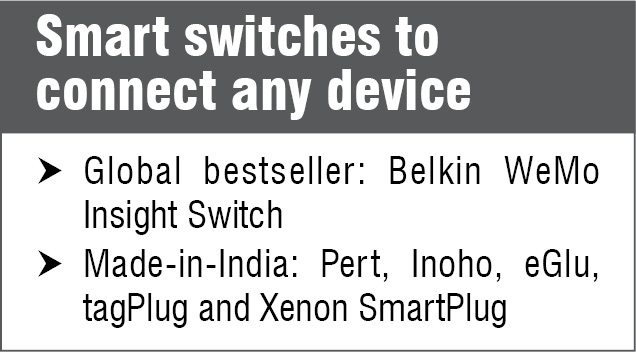 “Managing multiple connected devices, when each device is connected individually, can be a pain in the neck. It becomes a connected chaos. Connected devices in a home can have different manifestations or functions, for example, on and off for lights, drawing and raising of curtains, video feeds from cameras, cooking functions on the microwave, wash cycles in a washing machine and so on.
“Managing multiple connected devices, when each device is connected individually, can be a pain in the neck. It becomes a connected chaos. Connected devices in a home can have different manifestations or functions, for example, on and off for lights, drawing and raising of curtains, video feeds from cameras, cooking functions on the microwave, wash cycles in a washing machine and so on.
“Eighty per cent of the interactions in a home are on/off interactions, which is what our first product targeted. We have now integrated other devices as well, for example, motorised curtain controls and connected video cameras,” says Deepankar Garg, co-founder of Inoho.
At the heart of Inoho solution is the home controller, a central platform that talks to the peripherals connected to it. It consists of a processing unit and communication modules. Their first peripheral is a switchboard module, which fits easily behind the switchboards at home. It combines communications, processing and actuators (to achieve on and off).
Then, there is the Cloud server that can help users access, control and monitor devices from anywhere in the world using the app as the front-end. There is a Web version of the app that can be run on any browser, as well as mobile versions for iOS and Android devices.
“Inoho has not covered the universe of functions or devices, for that matter, I do not think anyone has. Integration onto the platform is going to be a continuous process. And we will be continuously adding more products and functions and tying up with appliance manufacturers so that users can do everything centrally, and all devices can learn from and talk to each other. It is a continuous process,” explains Garg.
In the days to come, Inoho plans to enhance their switchboard module with different configurations and form factors, add more peripherals to their platform and also enhance the platform itself so that functionality and intelligence of the platform is more than the sum of its individual parts.
Adding security to the equation
With constant developments in embedded hardware and operating OSes, displays and user interfaces, it is possible to develop a smartproduct for almost any requirement. And if you make it compatible with one of the popular platforms, then it becomes simple to set up and use, too. However, can security be taken for granted as much as smartness and simplicity?
During a recent research on the security of Internet-connected home devices, doctoral students at Princeton University, USA, found that several popular devices were leaking information such as zip codes of users, by sending these over the Internet without proper encryption.
In another similar venture that involved attacking an experimental setup of Samsung SmartThings home automation platform with a lock-pick malware app, cyber security researchers at University of Michigan, USA, were able to get the pass-code to open a home’s front door.
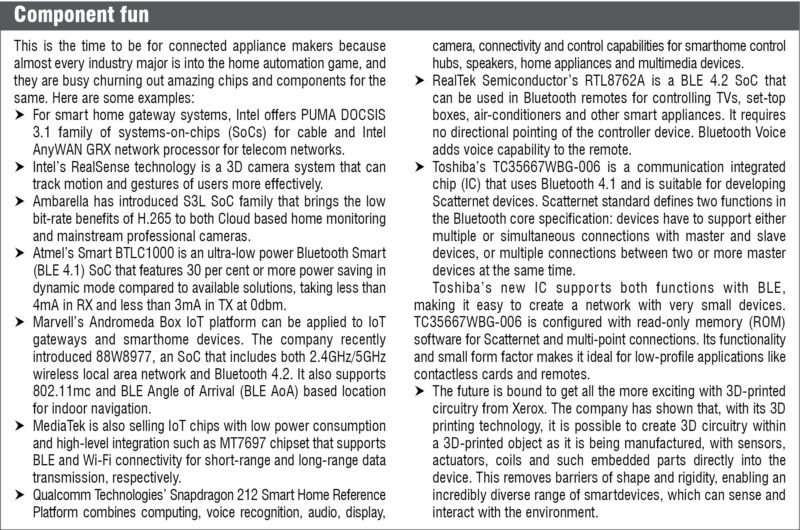
A few other experimental attacks levelled against the system also succeeded. The results led a professor to comment in a media report that home automation is okay as a hobby but not yet ready for regular use, considering the poor state of security of a popular system that has been in use for several years.
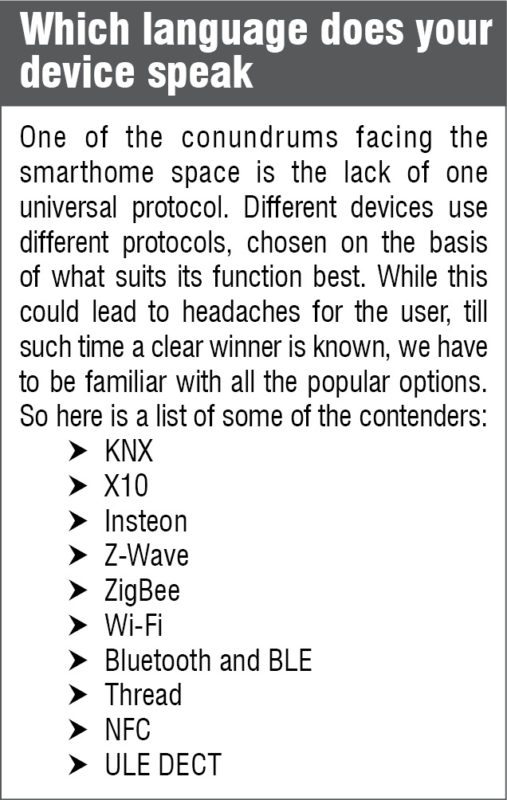 Experts also feel that smart TVs are a sure-shot route for hackers to reach your personal computers and trace out sensitive information like passwords. In a recent media interview, Pam Dixon, executive director of World Privacy Forum, commented, “As more people get these smartsets, we will see a lot more hacking of TVs to get into the home computer network. It is not a backdoor or a sidedoor, it is a front door to your home network. It is a toboggan run directly to your computer.”
Experts also feel that smart TVs are a sure-shot route for hackers to reach your personal computers and trace out sensitive information like passwords. In a recent media interview, Pam Dixon, executive director of World Privacy Forum, commented, “As more people get these smartsets, we will see a lot more hacking of TVs to get into the home computer network. It is not a backdoor or a sidedoor, it is a front door to your home network. It is a toboggan run directly to your computer.”
In a shocking demonstration, Candid Wueest, a threat researcher with digital security firm Symantec, successfully infected his Android based smart TV with ransomware, a piece of malicious software that locks a computing device until a user pays a ransom to the hacker.
Attempting to overcome such security threats, Samsung has included a security suite called GAIA in the Tizen based OS used in its newer TVs. This apparently creates a secure space to safeguard personal information such as credit card numbers and passwords. According to Samsung, GAIA also has built-in anti-malware to detect and block any unauthorised programs that may be used to hack key parts of the set’s OS, and it encrypts important data transmitted between the set and other servers.
“There is an overflow of data. Technology has advanced to an extent that this data can be accessed/ extracted and used by anyone else, in any part of the world. As data increases, it is necessary that chips become more secure and resistant to a possibility of hacking. Chip vendors like us, have a vital role in embedded device security. We have to build processors with built-in code verification capability, physical tampering detection and encryption engines. A major security hazard is that many devices, once deployed, cannot be upgraded to add security fixes. At NXP, we constantly provide manufacturer upgrades to ensure safety of our chips and end consumers,” says Gupta.
Dojo Labs, a startup aimed at ensuring the security of things, has developed a product called Dojo, which protects your connected products from hacking. Connected to your router, Dojo keeps filtering all traffic that flows in and out of your many devices through the router. It attempts to understand patterns in the way your devices are used and the kind of data that normally flows.
When there is any anomaly in the pattern, the user is immediately alerted. When it is a small or potential threat, Dojo begins by alerting the user. But, when it detects a real serious hack, it might even go ahead and disconnect the device as a precaution, till the user attends to it.
Cujo is a similar device that plugs into your router and acts as a firewall for your connected devices’ data traffic.
Standardisation would ensure stability and scalability
The connected home scene is getting better, with smart, simple and secure as part of the equation. The one other S needed to complete the picture is standardisation. “There is no current state of standardisation in the country for connected homes. However, with the current government’s focus on smartcities and the need for a uniform code for the same, we are quite certain this will soon be extended to the smarthome space.
“Europe has been working to create a standard language for smart appliances. Hopefully, India will follow the same path sooner or later. There was also news towards the end of last year that the Internet of Things (IoT) is going to have some standardisation, too. All this is going to get the government to ensure uniform measures across the connected home space,” says Gupta.
Garg too feels that, “There is limited standardisation in the industry right now. The user, functionality, players, hardware and software, all these are evolving rapidly. This essentially implies that standardisation is possible only at a high abstract level. Going forward, whatever solves the most pertinent use cases will start becoming the standard around which others will evolve. For example, in communication, we think ZigBee will become prevalent.”
With more standardisation, we will find more people willing to take the plunge into home automation because it will guarantee longer lives for their products and greater interoperability—in short, a more stable future for the emerging technology.
“When smartcities become a reality, people will realise how convenient it is and will make the shift in their personal space, too,” concludes Gupta.
Janani Gopalakrishnan Vikram is a technically-qualified freelance writer, editor and hands-on mom based in Chennai






